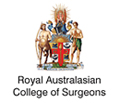Additional Tests
What is the additional testing?
Additional testing may be required to determine the severity and type of dry eyes you have and this includes:
- Lipiview: The lipiview is a machine that uses interferometry to measure the thickness of the lipid or oil layer in the tears. Too much or too little oil can lead to instability of the tear film causing dry eye symptoms.
- Osmolarity: Studies show that in dry eyes the tears are hyperosmolar. This test collects a very small amount of tears (40nL) and is able to detect if the tears are hyperosmolar or not.
- Schirmers: The schirmers test has been around for a very long time and is used to determine if the eye is producing enough tears. A small strip of specially made paper is placed in the eye to collect tears which can then be measured to determine if you are producing enough tears.
- Inflammadry: Dry eyes can cause a cascade of inflammatory responses. The inflammation can cause worsening of symptoms. Inflammadry collects tears and is able to detect the presence of matrix metalloprotease (MMP-9) which is an enzyme that is released when there is inflammation.
- Meibography: Meibomian glands are tiny oil gland on our eyelids that produce the oil layer for our tears. With age and certain conditions, these glands can become small, blocked and permanently damaged. Meibography allows us to assess the condition of these glands.
- TBUT: Tear break up time, is a time measure of how stable the tear layer in the eyes are.












